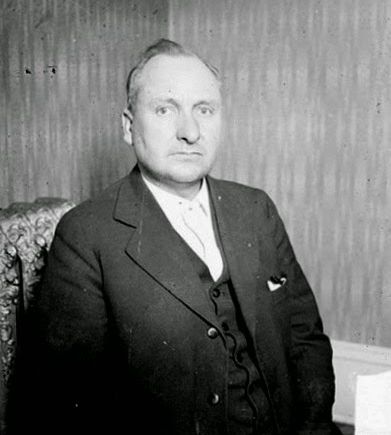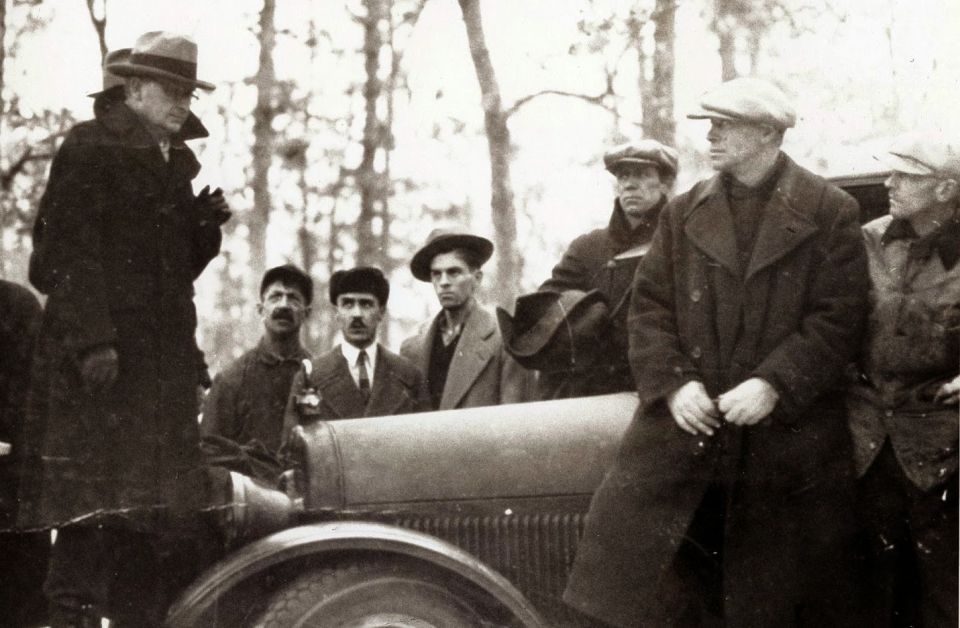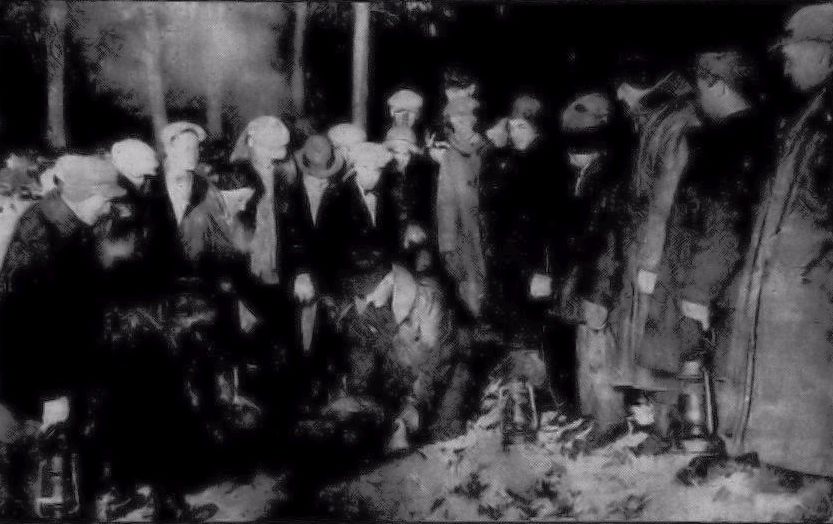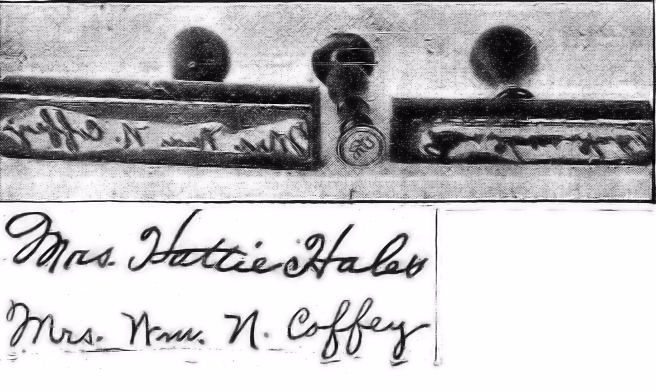Hattie
Originally published in The Rock River Times.
When the telegram arrived at the cottage on Brown Street, everyone in the family was surprised. The telegram announced the visit of one of Sarah Sherman’s daughters, Hattie. Hattie lived in La Crosse, Wisconsin since her husband’s death six years ago. Hattie’s husband left her in good financial state but she liked working so she found a job as a purchaser for a large department store in La Crosse. It wasn’t the fact that she was coming to Rockford to see her mother and sister that was so surprising. It was the fact that the telegram mentioned she would be accompanied by her new husband, William Coffey.
Sarah Sherman lived with her daughter, Anna and Anna’s husband, William Holdridge. Sarah was eighty-seven years old in 1926. Though she was in very good shape for a woman her age, she felt safer living with her daughter and her family. Anna and William ran a small grocery store in town. Anna’s son, Gerald helped with both the store and with his grandma.
No one knew anything about Hattie’s new husband when they arrived at Anna and William’s house in the middle of October 1926. They only knew that Hattie seemed happy about this new chapter in her life. William Coffey didn’t smoke, swear or drink. He went to church and read the Bible regularly. In fact, the couple met at church in La Crosse. They both sang in the church choir.
The family could see that Hattie was quite taken with William. William and Hattie were planning a honeymoon road trip. They were going to take in all the fall colors of Iowa, Illinois and Wisconsin. The trip would include some nights of camping in a tent and others at hotels. Hattie was almost giddy when she spoke of it.
Sarah didn’t show it on the outside but on the inside, she was very concerned. Her daughter was fifty-three years old but Sarah didn’t like the fact that Hattie had married this man she had only known for six months. Sarah felt concerned enough to discuss it with Anna. They decided to speak to Hattie one evening when the women had some privacy. Hattie just laughed off their concerns. “He is just the man for me, Mama.” Hattie told her elderly mother. Sarah and Anna watched Coffey closely looking for a clue of his true nature.
Coffey claimed to have a successful business. He had also had a big house in Madison that he invited them to visit. He was charming and quoted Shakespeare. He attended church with the family and had a very nice voice while he sang the hymns. Hattie thought he was the perfect partner for her.
Sarah and Anna tried to focus on the fact that Hattie was happy. But there was fear in Sarah’s heart as she watched the couple load their car for the trip. Sarah just couldn’t shake the feeling that she would never see Hattie again. Anna would say later that she felt the same way.
The family received a letter from Hattie a few days later. The couple stopped in Galena for a night and moved on to Dubuque. They were headed toward Maquoketa State Park to see the caves. They stayed in a hotel that night but would soon be camping right in their car.
The next letter came a few days later. Sarah and Anna were surprised when they realized that the letter was from William. He told them about their adventures at the caves and explained that Hattie was seated right beside him as he wrote the words. After several letters, all written by William, Anna asked why they didn’t hear from Hattie.
More letters arrived, this time from Hattie. At least they appeared to be from Hattie. They were typewritten and the signature didn’t seem quite right. The family grew concerned about the letters. That concern turned to fear when they received the final letter. This one was written by Coffey. He explained that he and Hattie were in Asheville, North Carolina. He had terrible news. Hattie had left him and ran off with another man. Coffey had no idea where she was. He finished the letter with ”my heart is broken.”
That set off red flags for the family. Sarah told her daughter and son in law, “something inside me warned that all was not well with Hattie.” Anna and William contacted Hattie’s other siblings and the family discussed their options. Anna came up with a plan to trap Coffey. Hattie owned stocks and bonds in different companies. The family knew that Hattie owned stocks in the Elroy Oil Company in Elroy, Wisconsin. The family lived there when Sarah’s husband Leander was alive. The Elroy Oil Company was having their annual Board of Director’s meeting. Anna wrote Hattie a letter reminding her about the meeting. She mentioned that if there were any changes to be made that Hattie would need to attend the meeting.
Coffey took the bait and attended the meeting. He carried a letter supposedly typed and signed by Hattie turning over the $500.00 worth of stock to her husband. The family alerted the authorities and they were there to take Coffey into custody. He was arrested for forgery. The family felt that they would finally get the answers to Hattie’s whereabouts. They had no idea the twists that the story would take.
Police soon found out that everything that Coffey had told Hattie and her family was a lie. Even their marriage was a lie. Coffey had a wife and three children that lived in Madison, Wisconsin. They had been married for twenty three years. The papers referred to her as Mrs. Coffey number one. When Mrs. Coffey heard of her husband’s arrest in Elroy, she contacted the police. Her husband traveled for his job and she wouldn’t see him for months at a time, so his absence didn’t arouse her suspicion.
When the police searched Asheville for Hattie, they could find no signs that she had ever been there. Coffey told police that Hattie had run off with a man named St. Clair. Police found no one by that name at any of the hotels during the time Coffey claimed they were there.
But police found all of Hattie’s suitcases in the trunk of Coffey’s car. They also found that Coffey’s first wife had some of Hattie’s clothes and jewelry in her possession. She claimed they were gifts from her husband. When Anna and Sarah were shown pictures of the jewelry, they identified them as Hattie’s. “I knew then that she was dead” Sarah stated. “Those rings were precious to her.”
Police started to pressure Coffey for the truth of what happened to Hattie. But still Coffey wouldn’t budge on his story that Hattie had deserted him in North Carolina. Hattie’s sister, Anna who was praised in the papers for her strategy to catch Coffey now stepped forward once again. She offered to attempt to get the truth from the man she believed killed her sister. The police agreed and Anna went in the interview room. She sobbed and begged Coffey to tell the truth. Anna told him that her aged mother was heart-broken and needed to bring her daughter home. Coffey was moved to tears himself when Anna reached out and grasped his hands. He was still crying as she slipped from the room. It took two more hours but finally Coffey weakened. He admitted that he had killed Hattie.
Coffey said that they were camping by the Mississippi River in Dubuque on October 11, 1926. He had spent part of the day visiting clients (mostly women). For some reason, this made Hattie jealous. When he returned to the camping spot they argued and she slapped his face. Then Hattie picked up a large bat that they kept in the tent and tried to hit Coffey with it. This angered him and he took it away from her and swung out with it striking Hattie in the head. She was dead before she hit the ground.
Coffey stated he panicked and put her body in the car. He drove unto the bridge, got out of the car and threw Hattie’s body off the bridge into the river below. When authorities pressed him for the exact location, they thought it strange that he kept insisting that they camped in Wisconsin. It all became clear when Coffey announced that he thought they were trying to trick him into saying that the camp was in Iowa. Iowa had the death penalty but Wisconsin did not.
Coffey stuck with his story for a couple of days. Authorities searched up and down the river. It had been a cold January and some of the river was actually frozen on the banks. By January 27, police had found no body. They had found a baseball bat in the Eagle View Park in Dubuque. They told Coffey that since there was no body to prove otherwise, they would have to believe that Hattie had been killed in that park. The park was in Iowa so things did not look good for Coffey at that point. Coffey once again changed his story.
This time Coffey claimed that on October 9, he and Hattie were in the car driving across the Mississippi River heading along the river in Wisconsin. They pulled over to make camp in some woods about six miles south west of Platteville. It was here that they fought and he struck Hattie, not with a bat but with a small axe. The police found the axe wrapped in a grass mat hidden in the basement of his home in Madison. Coffey confirmed he hid the axe there when he had returned to spend Christmas with his wife and children.
Coffey also changed another part of the story. He hadn’t thrown Hattie in the river as he first claimed. He now said that he had used a butcher knife and the axe to dismember her. He buried her in twelve different graves in the woods. Word about this leaked from the interrogation room. Folks around Platteville heard of the horrible killing that had taken place in Riter’s Woods as the location was called at that time.
People decided to drive to those woods. Soon two hundred cars lined the road leading to the wooded area. Though a couple dozen sheriff’s deputies had been sent to secure the scene they were unable to stop the sea of people that wandered through area. One man, a farmer named Frank Olsen spotted a mound of loose soil covered by snow. He kicked at it. A policeman noticed his actions and brought a shovel. He began to dig and about three feet down he found part of a women’s torso.
While the townsfolks had been wandering through the woods, Coffey was being transferred from the jail in Mauston. District Attorney R.M. Orchard and Sheriff Lyall Wright accompanied him the next morning. They also told him that his wife of twenty three years had filed for divorce.
When the small group of men arrived at the woods, they saw a shocking sight. More than seven hundred cars lined the road and over three thousand people were standing in a large circle. Coffey kept his head down and began to lead the men from place to place revealing body part after body part. District Attorney Orchard grew frustrated by the pushing and shoving of the crowd as they jockeyed for the best position to see each body part. Finally, he turned to the huge group and asked what they wanted. They answered they wanted to see Coffey. Orchard made Coffey get up on the running boards of a nearby car so that everyone could get a look at him.
Police found the butcher knife that Coffey had used along with some of Hattie’s internal organs under the snow. They now believed that Hattie had been killed there in the woods outside of Platteville.
It took quite a while to unearth all of the body parts. They had all been wrapped in paper or canvas material. Hattie’s head was the last piece to be found. The police knew that the head would reveal critical evidence of how Hattie had been killed and they were desperate for it to be recovered. There was a gasp that washed through the crowd as the last part was brought up. The head was wrapped in newspaper and appeared to be burnt. Later, Coffey would explain that he tried to burn it to keep Hattie from being identified.
In a gruesome twist, the police placed all of the body parts on tarps and the onlookers passed by to see them. Women with their own daughters and men with their sons walked by the paper wrapped body parts of Hattie.
Anna was called on once again. She bravely agreed to look at the head to see if she could identify the grisly remains as her sister. Her strength and dedication to her sister touched even the most veteran of policemen.
The autopsy proved that Hattie had been struck in the head. Instead of a baseball bat, the medical examiner thought that the weapon might have been a hammer. Coffey claimed that he struck Hattie as she slept and that she never knew what or who had hit her. One can only hope that at least this time, his words were true.
Later many asked why Coffey confessed. The authorities believed that Coffey was aware of how the law worked. He adapted the story to give himself the best odds. Coffey mentioned that his own father had become insane and was institutionalized laying down the grounds for a possible insanity plea. He also was smart enough to know that if they didn’t find a body it would be hard to prove that Hattie was dead. It was only when faced with the possibility of the case being handled in Iowa with a death penalty involved that Coffey decided to divulge where he had placed Hattie.
Hattie’s family laid her to rest in the Elroy Cemetery next to her father. As her funeral was taking place, the man who murdered her was standing in front of the judge. The judge asked Coffey if he was guilty or innocent. “Guilty” said Coffey. The whole trial took eleven minutes. Coffey was sentenced to life in prison. He was transferred to Waupun to serve his time. He died there in 1962.
The townsfolk of Elroy who knew the Sherman family so well paid tribute to Hattie. They wrote a beautiful letter to Sarah and the rest of the family. They spoke of Hattie’s big heart, friendly smile, and dedication to her family. They spoke of the loss of one so dearly loved by all who knew her. Sarah would state that the letter helped her remember the way that Hattie had lived and not dwell on the way she died.
Copyright © 2020 Kathi Kresol, Haunted Rockford Events







